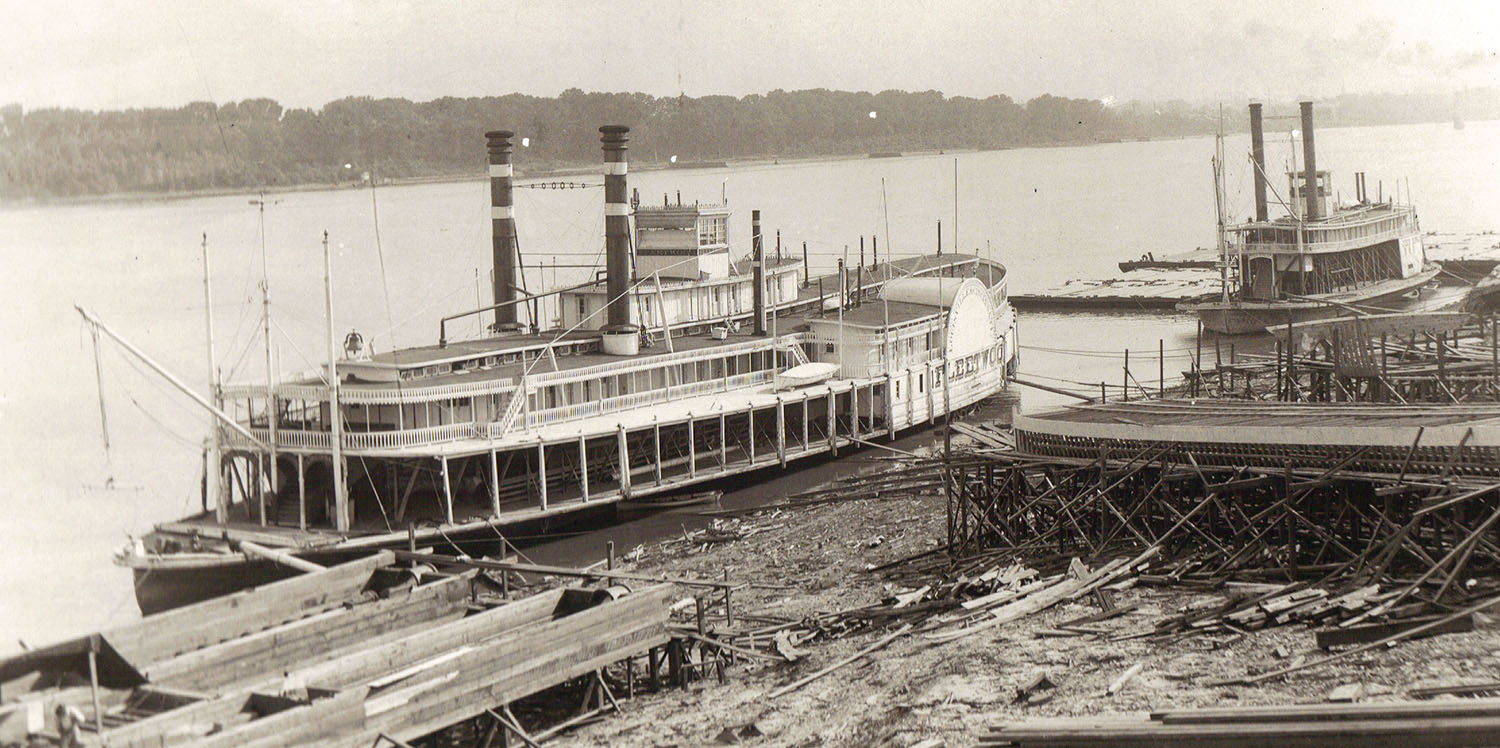The steamer Fleetwood was built at Cincinnati, Ohio, in 1866.
A sidewheeler with a wooden hull measuring 255 feet in length by 36 feet in width, the big packet was constructed for Capt. Charles M. Holloway and other investors to run in the Cincinnati–Pomeroy–Parkersburg trade. Later the boat was operated by the Cincinnati, Big Sandy & Pomeroy Packet Company.
The riverboat carried a print shop and editorial office aboard, located in the space beneath the floor of the pilothouse. A weekly newspaper titled the Fleetwood Reflector was published, mainly to publicize that the steamboat was a dependable passenger and freight carrier. The publication also carried advertising for area businesses.
Capt. Frederick Way (1901–1992) said that when the Sons & Daughters of Pioneer Rivermen decided to commence publication of a quarterly magazine in 1964, it was determined that S&D Reflector would be appropriate, taking the name from the former Fleetwood Reflector and owing to the fact that the S&D emblem contains a searchlight, composing a reflector.
The Fleetwood continued operating in the Cincinnati–Pomeroy trade until it was dismantled at Cincinnati and replaced in 1880 with a new boat of the same name.
The Second Fleetwood
The second Fleetwood was also built at Cincinnati on a wooden hull that was 302 feet in length, 43.4 feet in width and having a depth of 6.4 feet. Four boilers provided steam to engines having 25-inch cylinders with an 8.5-foot stroke. The side paddlewheels were 27 feet in diameter, working 16-foot bucket planks. The packet contained 58 staterooms.
The new steamboat departed Cincinnati on its maiden trip on August 26, 1880, operating in the Cincinnati–Huntington trade. Officers of the boat included Capt. J.T. Campbell, master, John Kirker, mate, and A.W. Kidwell, who served as engineer for 14 years. The Fleetwood’s fastest upstream time, from Cincinnati to Huntington, was 13 hours, which included stops at four landings.
When the C&O Railroad was opened to Cincinnati in 1883, the Fleetwood and its partner boat, the Bostona, ran in the Cincinnati–Pomeroy trade. The boat occasionally went as far upriver as Parkersburg, but never went beyond that city. Later, the vessel operated in the Cincinnati–Louisville run. Capt. John Brennan was master, with Capt. Henry Thomas and Capt. Charles Dufour as pilots. William Ketchum was chief engineer, and Charles Langhart presided over the purser’s office.
The Fleetwood was retired and dismantled when the steamer City of Louisville came out new from the Howard Shipyard in 1894. Capt. John Barrett purchased the hull for use as a model barge.
In this week’s image of the Fleetwood (second) the vessel is shown lying at the Howard Shipyard in Jeffersonville, Ind. Moored immediately downstream is the sternwheel packet John Howard, built at the yards in 1871 to run in the New Orleans–Ouachita River trade. The vessel was returned to Jeffersonville in 1893 to receive a new and larger hull, approximately five feet longer. The engines were recycled from the former boat. In 1894, the John Howard ran trips between St. Louis and Shreveport, La., under the command of Capt. J.W. Carlton. The boat burned on December 17, 1898, at Columbia, La.
Editor’s note: For questions or suggestions regarding the Old Boat Column, Keith Norrington may be contacted by e-mail at curatorkeith@yahoo.com.
Caption for photo: The second steamer Fleetwood at Jeffersonville, Ind. (Photo courtesy of Howard Steamboat Museum)



